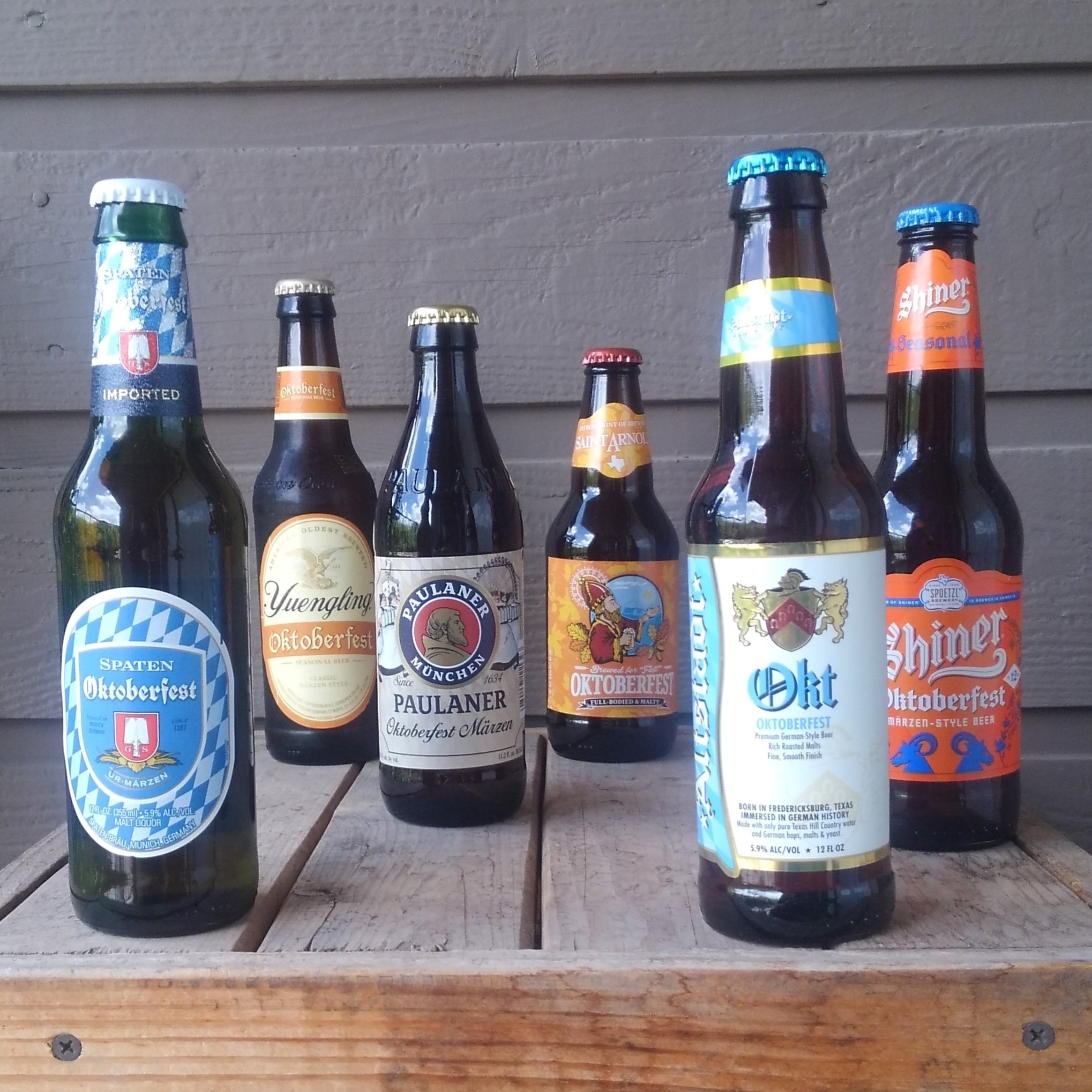Oktoberfest Beer: Style and History
To me, Oktoberfest beers are the best segue from a summer of light and hoppy beers into a winter of dark and malty beers. With the weather changing, it is a great time of year for pale to deep amber lagers with bubbling, sweet malt, and feelings of deep community and celebration. And the history of these beers is so deep it’s difficult to not get a little nostalgic and emotional when they start to pop up on our shelves. I often find myself buying multiple six packs and fantasizing about all the local Texas Oktoberfest festivals I might attend, with the hope of one day attending the festival in Munich.
But what is Oktoberfest beer? Is it the same as Marzen-style? Or a Vienna Lager? And what makes it so important to German tradition? All questions I have been asking myself as I see the varieties rolling into the stores in grand displays.
So, let’s find the answer and figure it out together. Grab a cold Spaten and strap in.
Style
First off, what is an Oktoberfest beer? In the simplest terms it is always a lager, whether Marzen-style or Vienna lager. The characteristics grow in variety from there, but that is the foundation of it. Many American craft breweries use top-fermenting yeast (Ale yeast) with German malt and hops, but these are not technically Oktoberfest beers according to tradition. Beyond that, Oktoberfest beer, for our purposes, falls into the categories of American and German.
According to Drizly.com, American Oktoberfest beers tend to lean more to the amber-colored and slightly sweet Marzen lagers, while the German Oktoberfest beers tend to be paler and more similar to what we would consider a traditional lager, or closer to what is known as a Dortmunder-style. Over the years, though, the American craft brew scene has resurrected Oktoberfest beers that are more similar to the beers served at early Oktoberfests, possibly because of cultural preference in America for heavier, stouter beers.
Marzen? Vienna? Dortmunder? Oktoberfestbier? So many words, and all we want to do is drink beer! I know, it’s a little complex, but tradition is king. Marzen and Vienna are the originals, and there is much overlap in the styles. Marzen and Oktoberfestbiers tend to use Munich malt, and Vienna Lagers tend to use, you guessed it, Vienna malt. Marzen-style beers are more malty sweet with notes of toffee, biscuit, and bread flavors, where the Vienna lager tends to be drier and hoppier.
History
Marzen, the style we often see in America, literally means March, like the month. According to BeerandBrewing.com, in 1553, Bavarian ruler Duke Albrecht V decreed that all brewing ceased between April 23 and September 29 to avoid spoilage of beer during the summer months. This put brewers in a busy place in March, but left them relaxed and drunk during the summer months as their lagers aged in cool caves. And when September rolled around they would finish their Marzen beers at the Oktoberfest in anticipation for a fresh batch of hops and malt.
It wasn’t until 1841 that Spaten Brewery out of Munich introduced Marzenbier at that year's Oktoberfest. Then in 1872, Spaten specifically labeled their beer Oktoberfestbier, a Marzen-style beer of which the recipe is still used today.
Beer tradition is deep in Germany, starting with the Reinheitsgebot, the beer law that designates a beverage can only be labeled beer if it is brewed with only water, hops, yeast, and malt. But one thing I did not know is that only six breweries are allowed to serve their beer at the Oktoberfest festival in Munich. Those breweries are Spaten, Paulaner, Hofbrau, Hacker-Pschorr, Augustiner, and Lowenbrau.
(And if you’re looking for the German tradition at home, these beers are served with rich cheeses like Gruyere and Emmental, and with dishes containing sausages and pork, or fried foods.)
As much as I love the abandon-all attitude of the American craft brew scene, I love tradition more, and Oktoberfest is one of those times that brings both of these things together. There are so many Oktoberfest offerings every year that I would be eternally betrunken during the months of September and October if I tried them all, and this is not including attending all the great Oktoberfest festivals in the German-influenced areas around us.
Next time you pick up an Oktoberfest beer think about the long road of history and the tradition that went into making it. But don’t think too much, that would just take all the fun out of drinking it.
Prost!
Mr. Brew
Sources:
https://drizly.com/beer/lager/dark-lager/oktoberfest/c196852
https://beerandbrewing.com/dictionary/F6izwsAEpA/
https://www.totalwine.com/beer-guide/lager/marzen-oktoberfest

